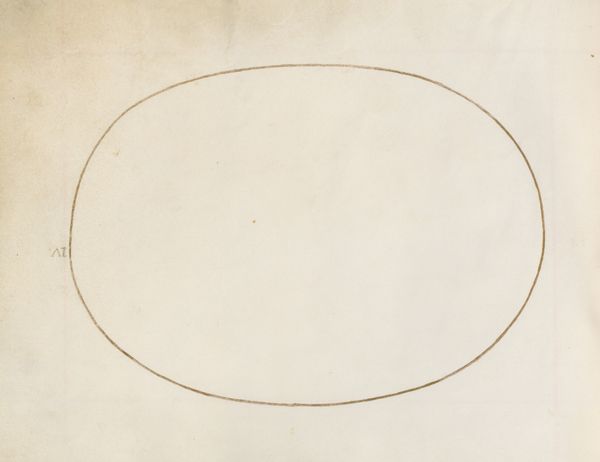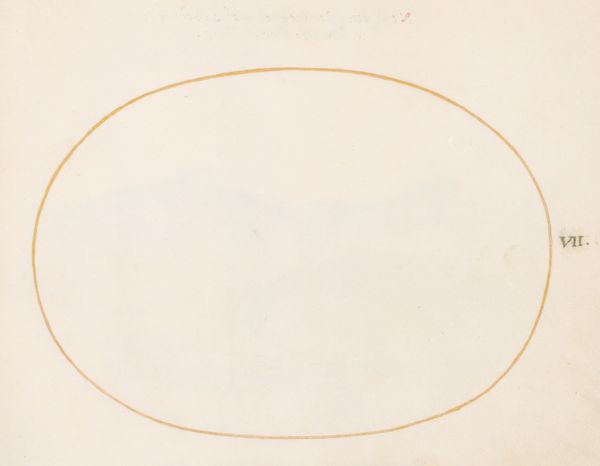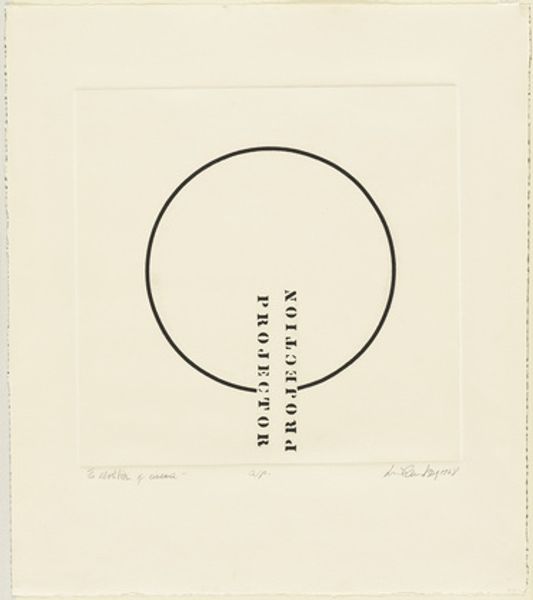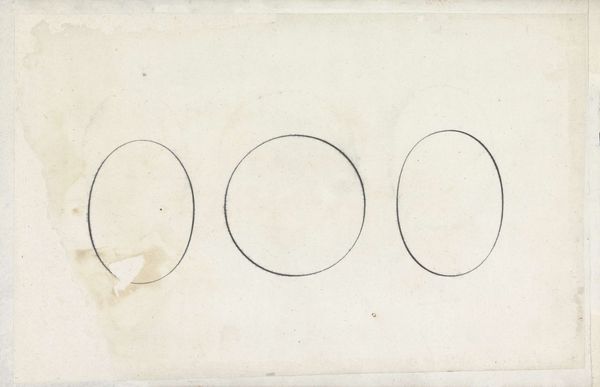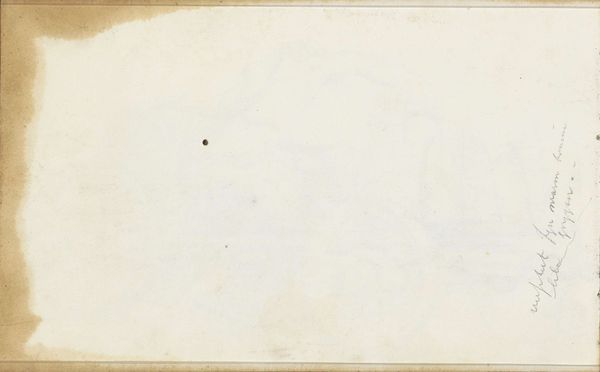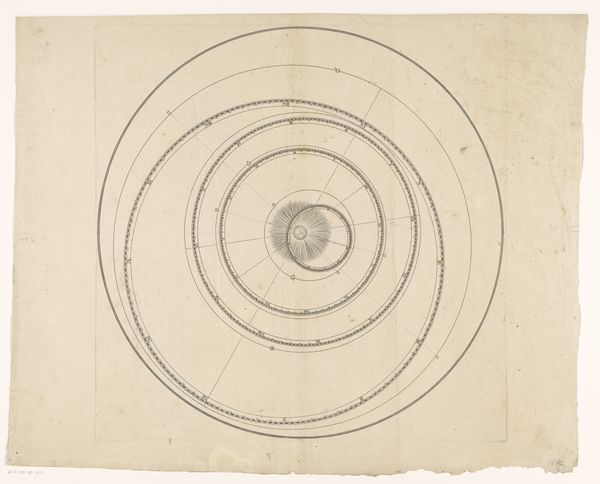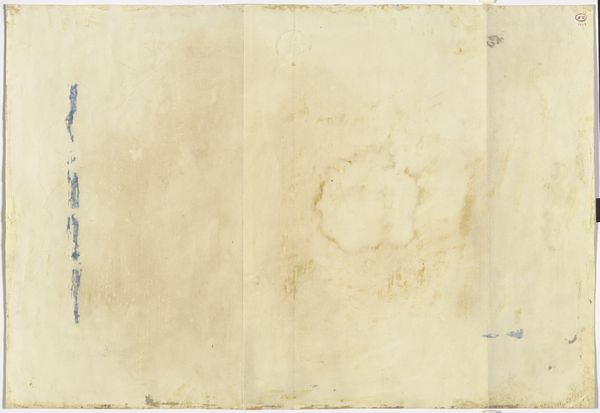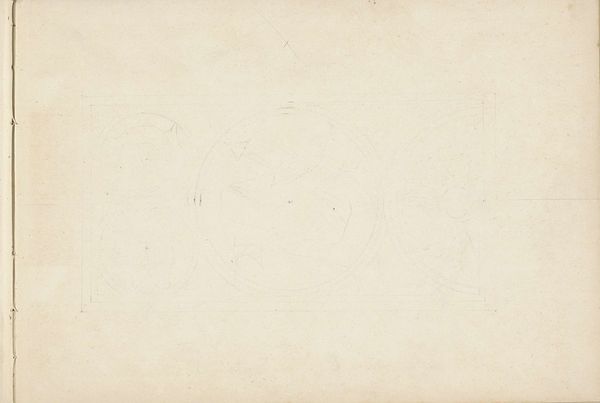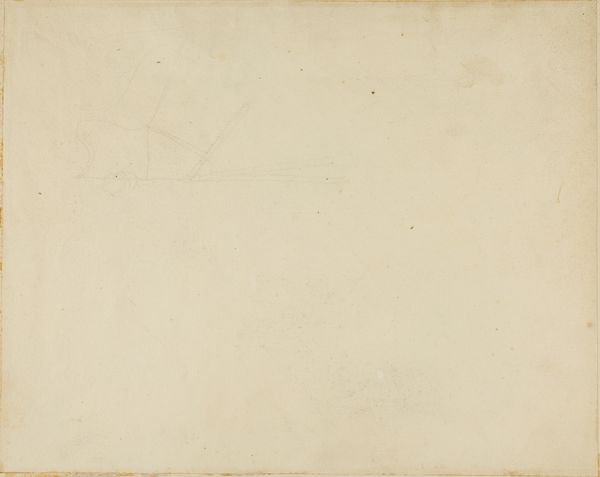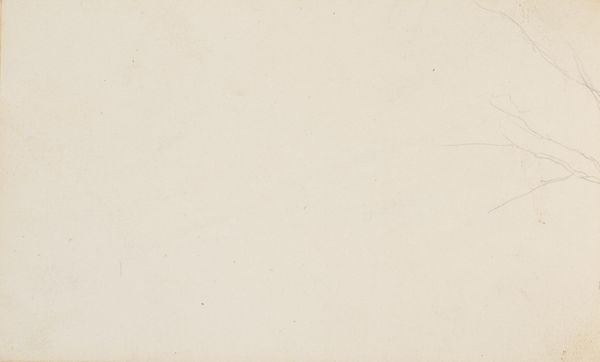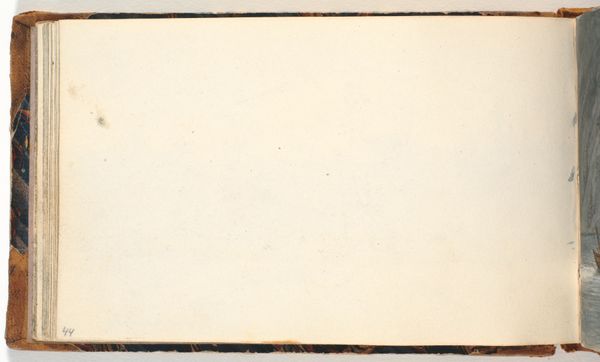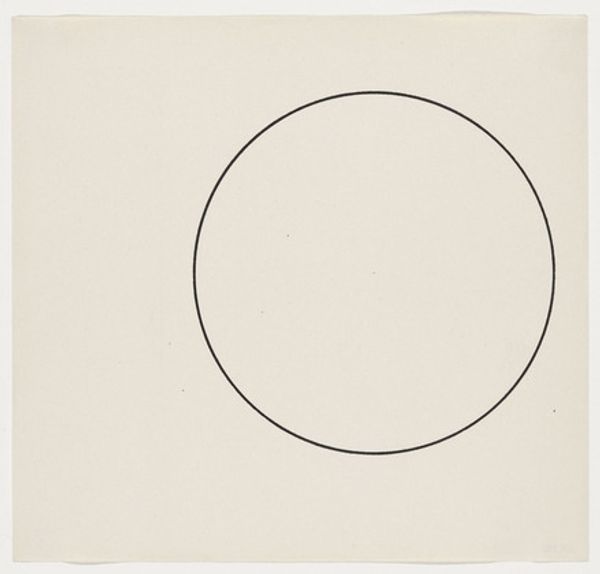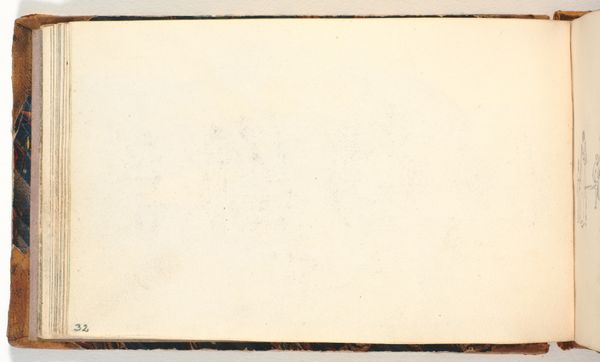
drawing, paper, pencil
#
pencil drawn
#
drawing
#
aged paper
#
paper
#
11_renaissance
#
geometric
#
pencil
#
line
Dimensions: page size (approximate): 14.3 x 18.4 cm (5 5/8 x 7 1/4 in.)
Copyright: National Gallery of Art: CC0 1.0
Curator: Let’s discuss "Plate 72: Empty Oval" by Joris Hoefnagel, created sometime between 1575 and 1580. It's a drawing done with pencil on paper. Editor: Well, my first reaction is that it is surprisingly…minimal. The starkness of the ochre line against the aged paper really emphasizes the geometric purity of the oval itself. It invites a close look at line and form. Curator: Absolutely. Hoefnagel was part of a larger artistic milieu, where there was interest in classifying and understanding the natural world. This almost scientific approach might explain this rendering. This spare geometric rendering could be seen in connection with ideas about ideal forms. Editor: But is it "empty," as the title suggests? I see a potential for reading it as a void, but the slight imperfections of the hand-drawn line—the small variations in pressure—keep it grounded, tethered to the human hand. It speaks of process, the gesture of creation. Curator: Precisely! Perhaps “potential” is key here; it offers us the potential to see emptiness but consider the broader context. Could it also signify a moment of potential or creation itself—a generative space ready to be filled? Considering his era and other artworks we might see gender and its role represented in this piece. The “oval” could invite discussions about historical representation. Editor: That resonates. Formally, I am thinking about its relation to Renaissance ideas about ideal form. Its placement on the paper creates such a sense of centeredness that amplifies this tension between idea and execution. The negative space is charged and alive. Curator: I concur. Hoefnagel’s "Empty Oval" is not simply a drawing, but an exploration of what constitutes meaning, and representation. This piece invites conversations surrounding identity, gender and the larger historical representation. Editor: I now appreciate how deceptively rich this “empty” form truly is! It showcases that there's value in examining the core essence of things in simple gestures and bare composition.
Comments
No comments
Be the first to comment and join the conversation on the ultimate creative platform.
